Are you curious which are the biggest cities in France?
There are many interesting cities to see in France other than Paris. All of France’s main cities have fascinating histories, cultures, and cuisines, making them well worth visiting.
Things you'll find in this article
- 10 Biggest Cities In France
- 1. Paris, Île-de-France
- 2. Marseille, Provence-Alpes-Côte d’Azur
- 3. Lyon, Auvergne-Rhône-Alpes
- 4. Toulouse, Occitanie
- 5. Nice, Provence-Alpes-Côte d’Azur
- 6. Nantes, Pays de la Loire
- 7. Montpellier, Occitanie
- 8. Strassbourg, Grand Est
- 9. Bordeaux, Nouvelle-Aquitaine
- 10. Lille, Hauts-de-France
10 Biggest Cities In France
Let us have a look at some of the largest French cities.
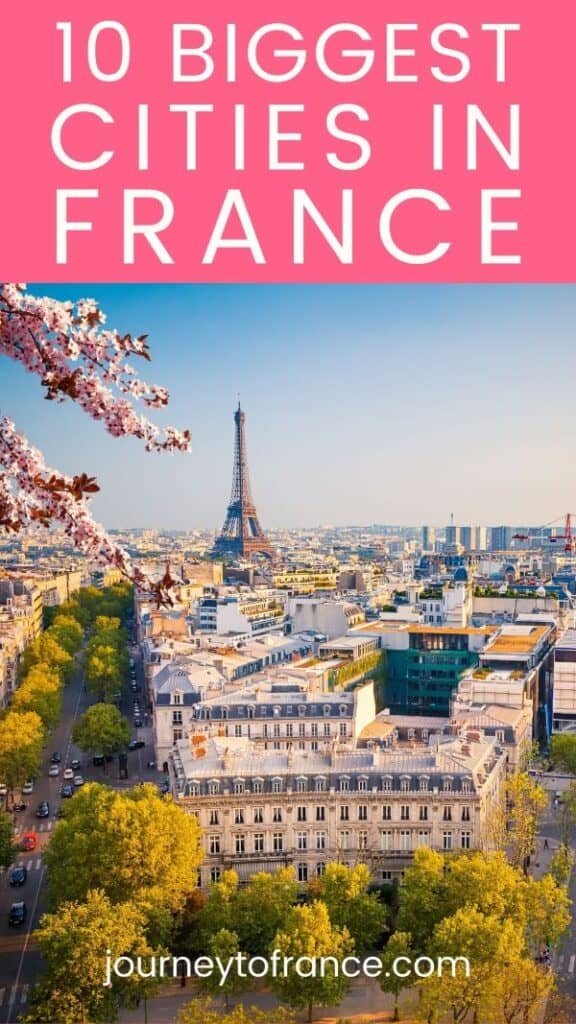
1. Paris, Île-de-France
Size: 105.4 km2 (40.7 sq mi)
Population: 2,2 million people (Paris) / 12 million people (with suburbs)
Paris is known for: the Eiffel Tower, the Louvre, Notre Dame, the Moulin Rouge, pastries, its cafe culture, culture, and fashion.
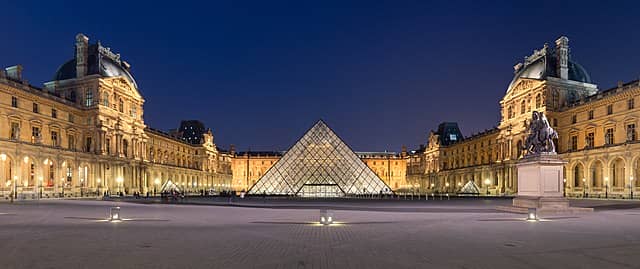
Paris has a peculiar allure that can be discovered by exploring its riverfront walkways, medieval cobblestone alleyways, and majestic tree-lined boulevards, all of which are steeped in history and romance.
Even the most jaded of foreign travelers are inspired by amazing cultural attractions.
Visitors are awestruck by the Louvre Museum’s incredible collection of treasures, while the Eiffel Tower offers really spectacular views.
2. Marseille, Provence-Alpes-Côte d’Azur
Size: 240.62 km2 (92.90 sq mi)
Population: 863 310 people
Marseille is known for: its Old Port, beaches, winding streets, pastis, and bouillabaisse.
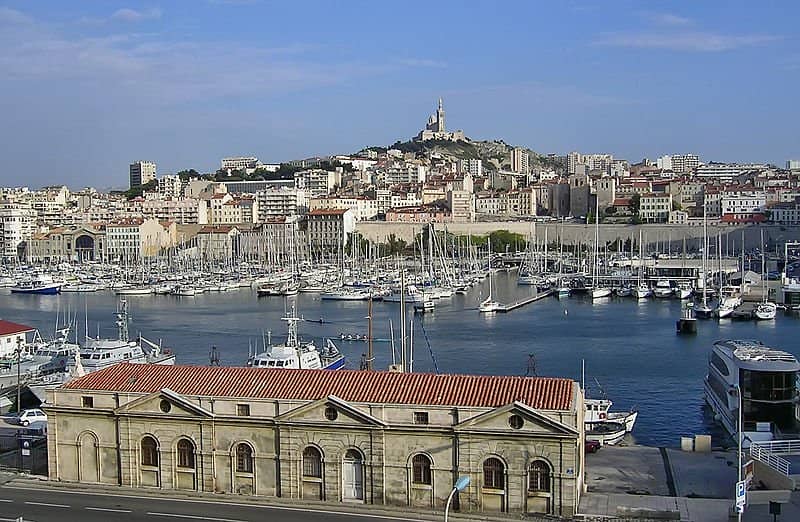
Marseille is France’s and one of Western Europe’s oldest cities. Its history dates from 600 BC, when ancient Greeks first occupied the area.
Marseille is now France’s second-largest city and the country’s primary commercial and cruise ship port.
With roughly 4 million tourists each year in recent decades, the city has grown into a popular tourist attraction.
3. Lyon, Auvergne-Rhône-Alpes
Size: 47.87 km2 (18.48 sq mi)
Population: 516 092 residents
Lyon is known for: massive Rebirth era’s old town Roman-era ruins, the imperial 1800s Presquiile quarter, and as a foodie heaven.
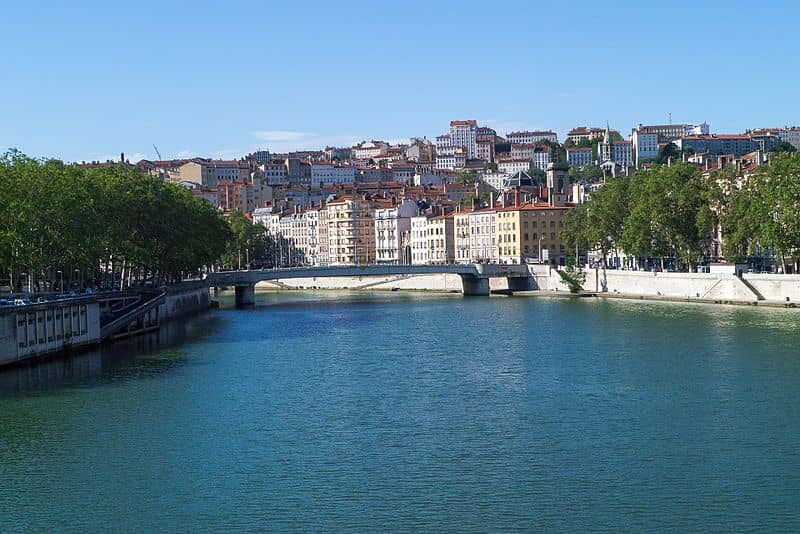
Lyon, which sits on the banks of two rivers, is known for its cuisine. Lyon is France’s gastronomic capital, and Gourmets travel to this historic city to sample traditional French food.
Visitors can sample classic Lyonnais cooking at one of the city’s many “bouchons,” or intimate brasserie/bistro eateries.
4. Toulouse, Occitanie
Size: 118.3 km2 (45.7 sq mi)
Population: 479 553 people
Toulouse is known for: the Basilica of Saint Sernin, its vibrant city square, the Japanese garden, Pont Neuf, and the scent of the European Space industry.
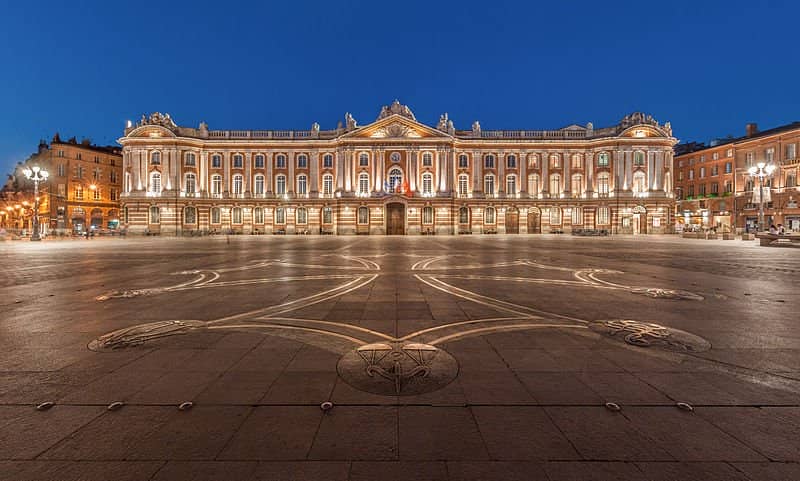
Toulouse is known as the Pink City because many of its buildings are made of terracotta brick, giving it a lovely pink colour.
Aside from that, Toulouse is rich in history, art, and culture, so there’s plenty to see and do on a vacation here. Toulouse is also Europe’s largest aerospace center, therefore a trip to the city would be incomplete without some space exploration.
Meanwhile, the Basilica of Saint Sernin, a gorgeous structure with a long history, is the most prominent monument in Toulouse.
5. Nice, Provence-Alpes-Côte d’Azur
Size: 71.92 km2 (27.77 sq mi)
Population: 340 017 residents
Nice is known for: its terrific climate, beautiful beaches, a stunning coastline with breathtaking vistas, many museums (after Paris), and festivals.

Located on the Baie des Anges, a broad bay with calm azure seas, Nice is set at the foothills of the Maritime Alps.
The gorgeous city combines the best of both worlds: impressive art collections with the warmth and beauty of the French Riviera.
Nice has attracted visitors since the 1820s as a stylish seaside resort town with the charm of an old city.
6. Nantes, Pays de la Loire
Size: 65.19 km2 (25.17 sq mi)
Population: 309 346 people
Nantes is known for: Château des Ducs de Bretagne (Castle of the Dukes of Brittany), Cathedral of St. Peter and St. Paul, vineyards that produce Muscadet wine.
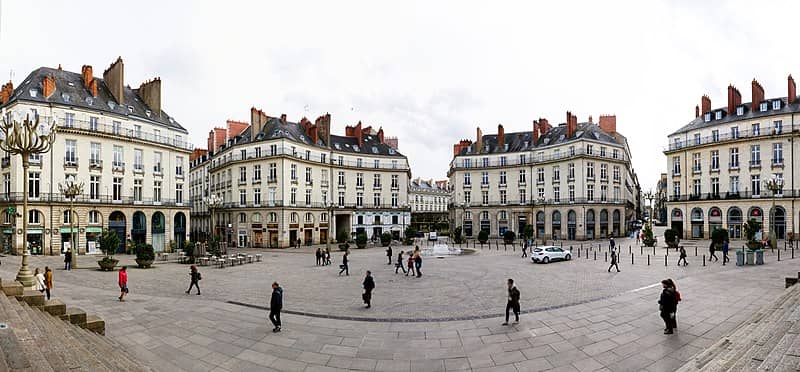
Brittany’s former capital, Nantes, is now a UNESCO World Heritage Site. This city is now the capital of Pays de la Loire region.
Nantes is France’s sixth largest city and the largest city in the west of the country. It used to be an important port, but today it serves as a regional crossroads.
The Dukes of Brittany Castle, the art gallery, the cathedral, and the old town are all popular tourist destinations.
7. Montpellier, Occitanie
Size: 56.88 km2 (21.96 sq mi)
Population: 285 121 people
Montpellier is known for: the elegant Place de la Comédie, L’Écusson or the Old Town of Montpellier, the cathedral, and wine tasting at Pic Saint-Loup.

Montpellier was once a bustling commercial hub, attracting traders from all across Europe, as well as the Levant and the Near East.
In 1137, Europe’s first medical school was established here, and its university students continue to contribute to making this Mediterranean city one of the most vibrant in the south of France.
The capital of the Languedoc-Roussillon region, Montpellier now boasts a charming ancient neighborhood centered on the Place de la Comédie.
There are formal gardens, a cathedral, and the Musée Fabre, which houses famous artists’ paintings from the 17th to 19th centuries, as well as ceramics and modern art.
8. Strassbourg, Grand Est
Size: 78.26 km2 (30.22 sq mi)
Population: 280 966 residents
Strassbourg is known for: being the seat of European institutions such as the Parliament, tits bridges, the Christmas market, and tarte flambée
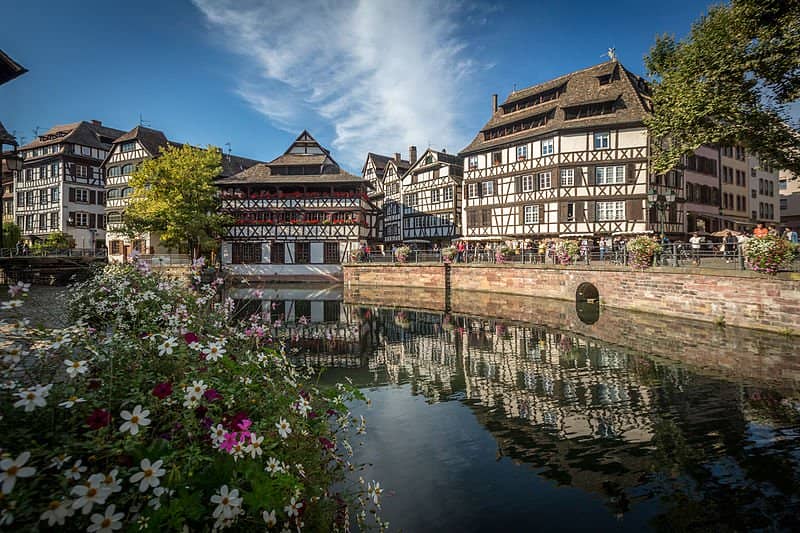
Strasbourg is in the Alsace region, which has been under French and German administration for centuries.
The city is neither French nor German, but rather Alsatian, a cross between the two. This is reflected not only in the city’s structures, but also in the cuisine, which combines French refinement with savory German comfort food.
The European Parliament’s formal seat is Strasbourg, and you may take a guided tour of the parliament’s stunning and modern circular edifice.
9. Bordeaux, Nouvelle-Aquitaine
Size: 49.36 km2 (19.06 sq mi)
Population: 254 436 people
Bordeaux is known for: the Cité du Vin wine museum, its vineyards, top-notch wines, and its Old Town.
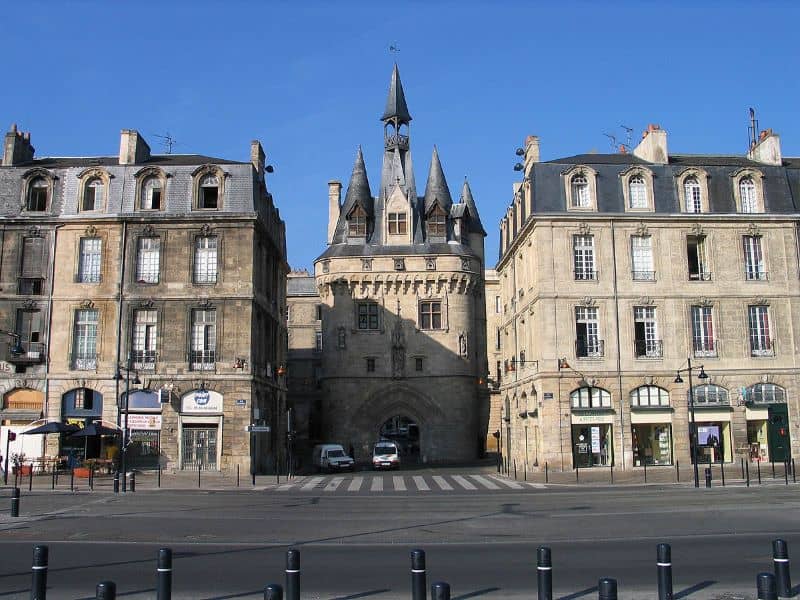
Bourdeaux is widely regarded as the world’s wine capital, thanks to its distinctive and sought-after namesake wine. Every year, around 700 million bottles of wine are made in this region.
Bordeaux is also home to 362 national heritage sites, including monuments and historiques, in addition to its most well-known export.
Every year, millions of people visit the city to see the architectural wonders.
10. Lille, Hauts-de-France
Size: 34.8 km2 (13.4 sq mi)
Population: 232 787 people
Lille is known for: the historic Vieux Lille, the Town Hall, Lille Citadel, and the weekend market.

Lille, the largest city in Northern France, with a population of roughly 234,000, is a favorite weekend destination for visitors from London and Paris.
The city is a must see during the Christmas season, when its Christmas Market fills the streets.
Lille, once a famous Flemish city, has maintained some of its historical grandeur with its magnificent ancienne bourse (ancient stock market), winding cobblestone streets, and old red brick residences.
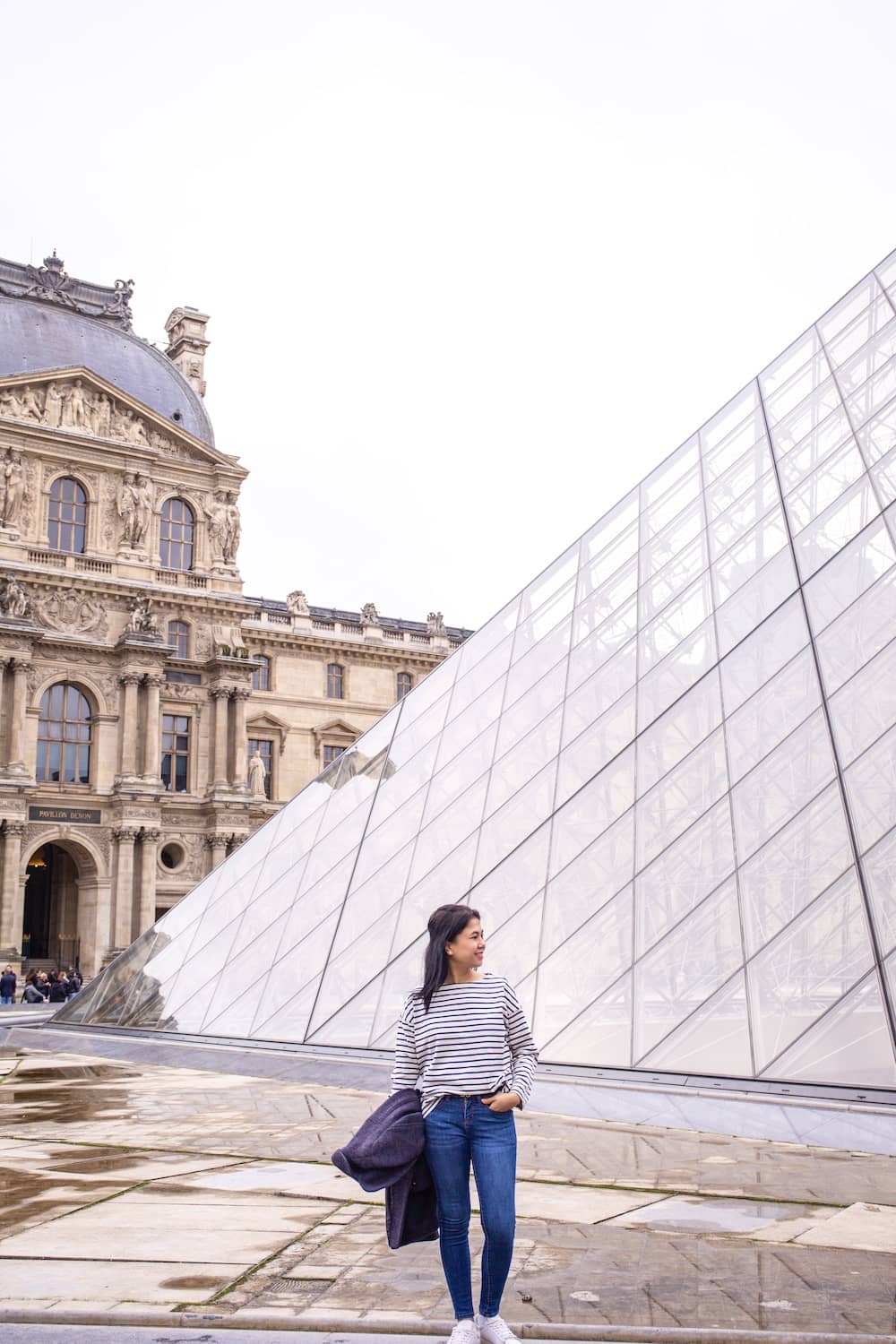
Hi, I’m Christine – a full-time traveler and career woman. Although I’m from the Philippines, my location independent career took me to over 40 countries and lived in 4 continents in the last 10 years, including France. A self-proclaimed Francophile, I love everything France.
